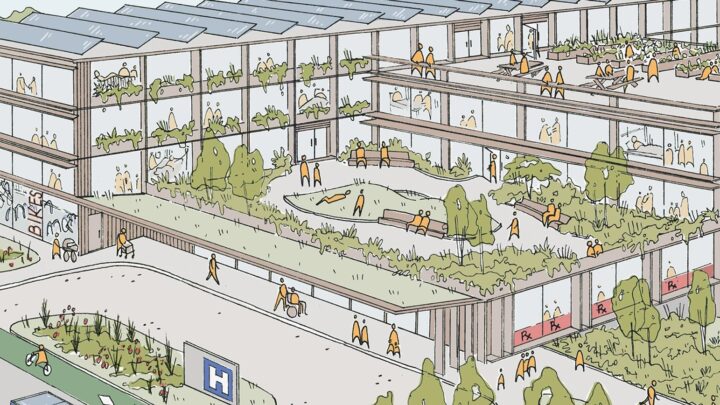We believe the ideal facility would involve several elements, from the building envelope, to the products which are purchased, to the outdoor features and, of course, to the people who work there and are treated there. An ideal hospital will require great leadership and a culture of sustainability from grassroots volunteers to the boardroom.
We invite you to explore all the elements below. We hope you can use them to help make changes at your own facility. Find a topic you are passionate about and find allies who can help you. Select one of the categories below and find the infographics – PEACH bytes – and resources associated with each sub-category. Please email us if we can be of assistance.
Expandable List
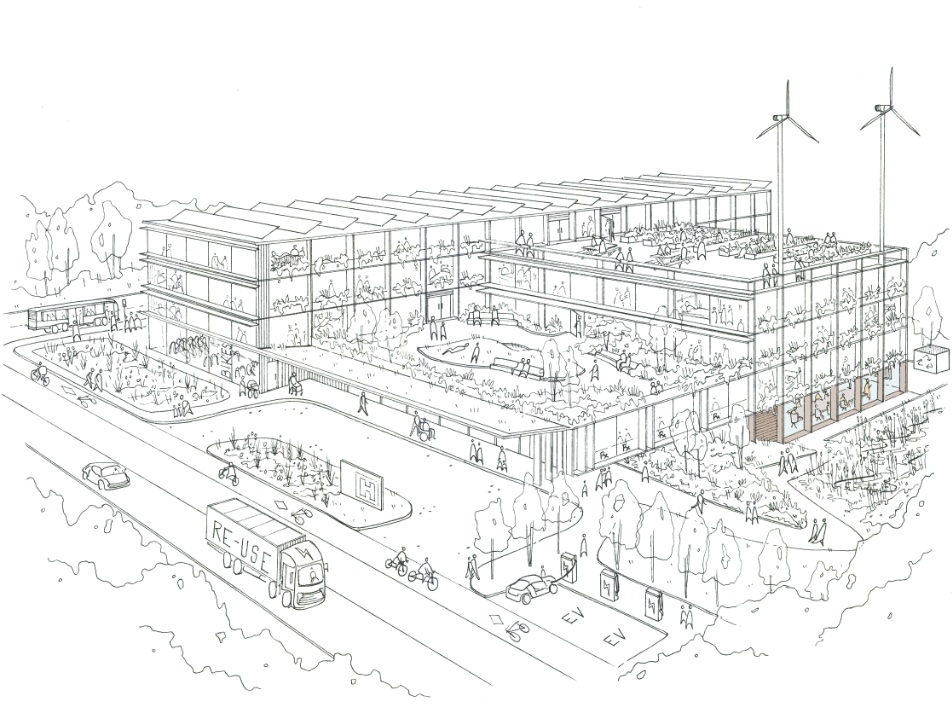
Leadership can create a culture of sustainability and set a zero carbon goal.
Offices are located in the basement of the ideal facility so that the clinical areas, on higher floors, are protected from flooding.
Identifying champions and leaders will be of vital importance to reach sustainability goals. Sustainability and climate leadership can be included in strategic plans and expanded upon in site sustainability plans.
Green teams can help carry out sustainable and climate smart actions. Under this category, we discuss a few stories and resources for leadership in sustainability. The National Health System in England is considered to be the gold standard in pursuing a zero carbon goal with Delivering a ‘Net Zero’ National Health Service (PDF).
Leadership roles
Every health care facility needs a leadership role to oversee sustainability. We also have a PEACH Byte infographic (PDF) about various roles in Ontario.
Resources
Forming a green team
Every health care facility needs a champion to lead a green team (or green teams) and partner with the sustainability lead. We interviewed the Toronto General operating room (OR) Green Team and share their story in this PEACH Byte infographic (PDF).
Resources
- Harvard – How to Create: Sustainable Offices
- Information about attending a surgical Green Team meeting? Email us.
- Questions on setting up a Green Team? Email the University Health Network.
Advocacy
Health care workers and leadership can work together to advocate for climate action with in their facilities general operations, policies and procedures. This advocacy can also grow to push the health care system in Ontario and beyond to meaningfully engage with climate action. There is an opportunity for leadership to create a better and more hopeful future for generations to come.
Resources
Phasing out Fossil Fuels in Investment Portfolios
Hospitals and staff pension funds manage large investment portfolios and many of the funds are in fossil fuel industries. Shifting investments to portfolios that prioritize more environmentally conscious sectors, such as the renewable energy sector, does not negatively impact investments and supports development and innovation within these sectors.
Resources
Social justice, equity, diversity and inclusion
Equity and diversity issues are relevant in all sustainability discussions. Climate change has a greater negative impact on marginalized communities, both locally and globally.
Resources
- Access to health care in remote, northern communities (PDF)
- Leadership: Insights on Equity, Diversity & Inclusion (PDF)
Green hospital winners
Several hospitals have won Canadian Coalition for Green Health Care (CCGHC) awards. The Green Hospital Scorecard (GHS) is the only comprehensive health care environmental performance benchmarking tool in Canada measuring energy conservation, water conservation, waste management and recycling, corporate commitment and pollution prevention. Visit their website to learn more.
Resources

Current and future health care workers will learn to incorporate sustainability concepts into everything they do. Just as we incorporate safety into day-to-day work today.
Education occurs throughout the facility.
As we train future health care workers (doctors, nurses, pharmacists, allied health professionals and others) and update training for the current health care workforce, it will become increasingly important to include information on how to incorporate actions to support climate-resilient, low-carbon, sustainable health systems into their health care practices. For future healthcare workers, introducing this information into their curriculum is starting to happen, albeit slowly. For the current workforce, incorporating this information into existing practices such as quality improvement, wellness practices and continuing education credits is essential. We need to create a culture of sustainability.
Quality improvement
Sustainability can be the focus of quality improvement (QI) projects and education.
Resources
Mindful clinical practice
Each test and treatment has a carbon footprint. For example, one computed tomography (CT) scan is equivalent to driving 90,928 kilometres. Avoiding unnecessary medical actions can lead to a reduction in overall health care carbon emissions, waste, costs, staff/patient time and patient stress.
Resources
- Public Health Ontario
- How to Calculate Your Carbon Footprint
- Choosing Wisely Canada – Is Your Hospital Choosing Wisely?
- Carbon footprint of tests – Impact of Choosing Wisely (PDF)
-
Sustainable practice: Sustainable prescribing of iron replacement therapy
Curriculum integration
Climate change and sustainability can be included in student training curriculum.
Resources
Wellness
Consider projects which improve both staff and patient wellness.
Resources
 Health care supply chains are the largest contributors to greenhouse gas emissions in the health system – estimated to be over 60 per cent of the greenhouse gas (GHG) emissions from health care in Canada.
Health care supply chains are the largest contributors to greenhouse gas emissions in the health system – estimated to be over 60 per cent of the greenhouse gas (GHG) emissions from health care in Canada.
Disposable products contribute to the large amount of healthcare waste. During the COVID-19 pandemic, supply chains that depended on manufacturing outside of Canada were challenged. Some products, such as personal protective equipment (PPE), were difficult to obtain through normal supply chain systems. Products that are locally made and reusable increase the resilience of the health care system.
An emerging approach to addressing the current linear production and consumption model where most of our resources quickly end up as waste, is the circular economy. The circular economy approach involves keeping resources in the cycle of use for as long as possible through reconsidering the purchase (i.e., refusing), redesigning, sharing (i.e., reducing), leasing, reusing, repairing, refurbishing and recycling. Health care has an opportunity to focus more on these lower energy and less waste intensive approaches and address both environmental and financial needs. Preventative health care is at the top of this hierarchy of approaches.
Refuse
Safely eliminating certain products and packages reduces waste within the facility and throughout the supply chain.
Resources
- Supply Chain: Refuse PEACH Byte (PDF)
- Green Hospital Procurement Guide – Environmentally Preferable Purchasing
- Sustainable Procurement Guide for Local Government and Public Sector Leaders
Reduce
Reducing the amount of products used through careful consideration. Manufacturers reduce the amount of material used in the product while still providing a fully functional product. We interviewed leaders from Temiskaming Hospital about the impact of their Choosing Wisely program and share their story in this PEACH Byte (PDF).
Resources
Reuse
Innovations within medical device and product industries have created reuse and reprocessing options that are clean, safe, affordable, efficient and reduce waste production.
Resources
- Refer to our list of companies supporting reuse
Recycle
Health care waste is carefully separated and transported to companies that can use the materials to make new products.
Resources
- Refer to our list of companies supporting recycling
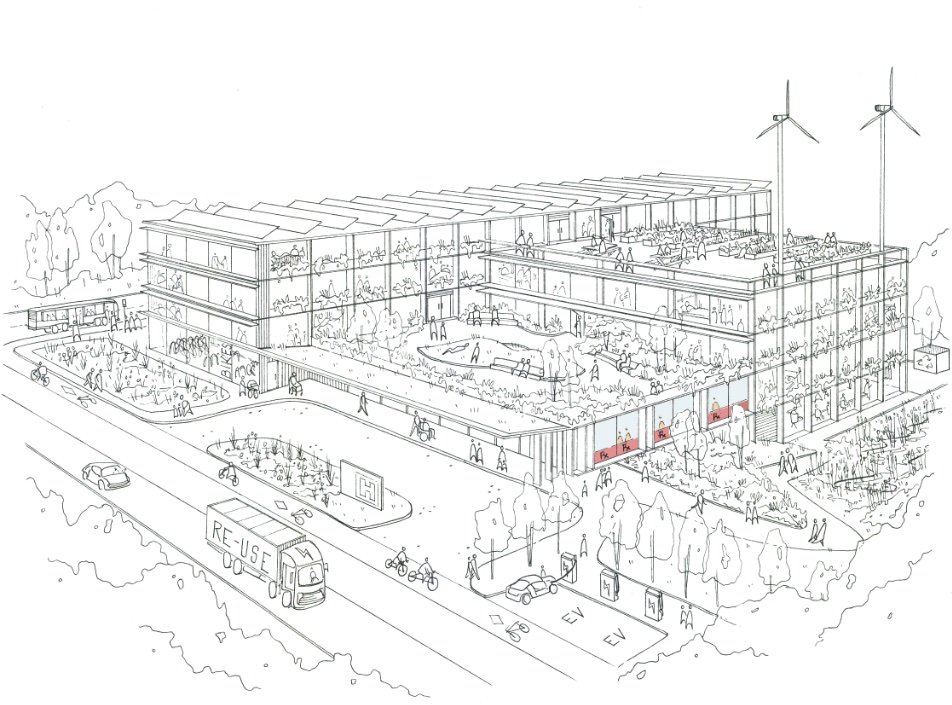
Drugs, which include prescriptive and non-prescriptive pharmaceuticals, are a core part of patient care and are used throughout the health system.
Devices are also a fundamental part of patient care, both in outpatient and inpatient settings.
Drugs and devices are also major causes of greenhouse gases in healthcare. The National Health Service in England (PDF) estimates that medicines and chemicals contribute to 25 per cent of their health system’s climate emissions. A small number of drugs constitute the top contributors to these emissions, with anesthetic gases and inhalers making up five per cent.
A concern regarding anesthetic gases is that they have not been included as reportable substances either in Canada or internationally. Significant emissions also arise from manufacturing and transport of drugs. It is time for us to pause and review how we prescribe or use these drugs in clinical practice and identify changes in practice which can reduce these greenhouse gas (GHG) emissions.
Deprescribing
Doing a medication audit is not only good for your patient, it is good for the planet.
Resources
- Deprescribing Guidelines and Algorithms
- The Canadian Coalition for Green Health Care – Sustainable Prescribing (PDF)
Anesthetic gases
Some anesthetic gases are worse for the environment than CO2. We interviewed three physicians about the negative impact of Desflurane and share their story in this Drugs & Devices: Anesthetic Gases & Surgery (PDF).
Resources
- Limiting the Environmental Impact of Anesthetic Gases (PDF)
- Ontario’s Anesthesiologists – Environmental Sustainability Working Group
- PEACH Byte – Which hospitals have banned or restricted desflurane? (PDF)
- The Greener Gases Toolkit for Reducing Desflurane Use
Metered dose inhalers (MDIs)
Metered dose inhalers contribute to greenhouse emissions. The carbon footprint from one pMDI (200 doses) is estimated as equivalent to a 290 kilometre care ride.
Resources
- Sustainable Snapshot Series: Environmentally Sustainable Opportunities for Health Systems – Inhalers
Pharmacy waste
Significant amounts of medications are thrown out in the waste or in the toilet. This leads to ecological impacts on regional waterways and surrounding ecosystems.
Resources
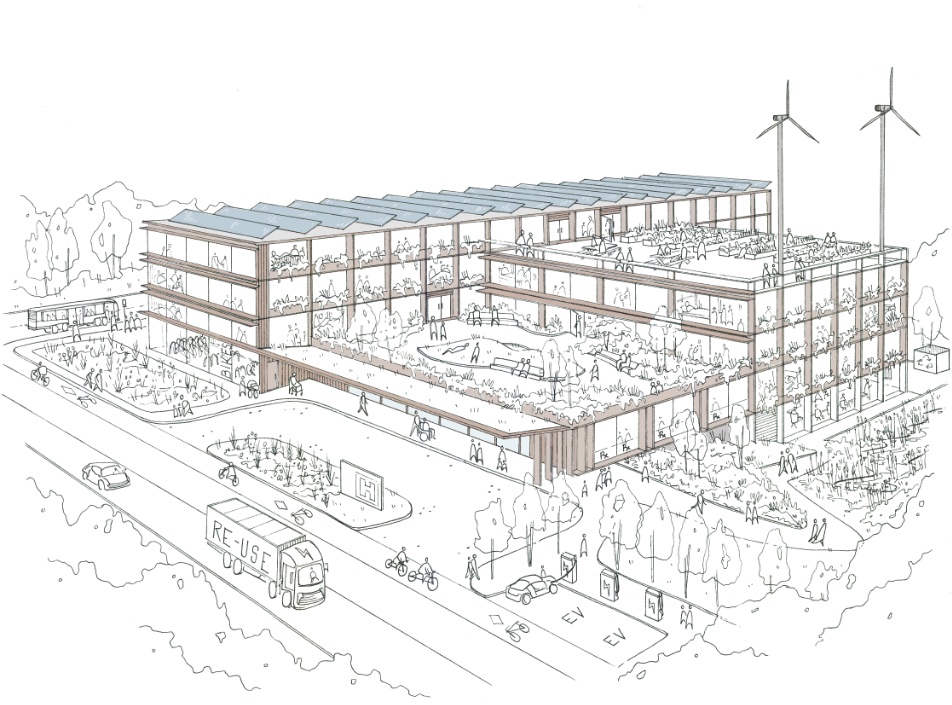
Most of our buildings – clinics, long term care homes and hospitals – use a significant amount of energy, releasing greenhouse gases (GHGs), which contribute to climate change. Knowing how energy is used in our buildings can help identify opportunities for energy conservation and efficiency.
Energy used to support building operations, such as heating ventilation and cooling (HVAC), is a significant source of GHGs and can be optimized through technology changes and practices. Individual behaviour can also affect the amount of energy used through use of energy consuming equipment, such as lights, thermostats and diagnostic imaging technology. Optimizing both efficiency and conservation can reduce GHGs and contribute to site climate-related resilience.
When power is lost, buildings using less energy will operate longer on their standby power systems. Water conservation and efficiency will also contribute to lower energy use and site resilience. Clean energy sources (i.e., renewable energy, such as solar, geothermal and wind) reduce GHG emissions and can also contribute to climate-related resilience. Building designs that use clean energy sources, and optimize energy and water, use will be more climate resilient.
Building design
If done correctly, building design can lead to more climate resilient infrastructure.
Resources
- Canada Green Building Council – Health and Well-being
- Leadership in Energy and Environmental Design (LEED)v4 – The Future of Green Buildings
Clean energy sources
Using clean energy sources, such as wind and solar power, can reduce our greenhouse gas emissions.
We interviewed the director of facilities and projects at Haliburton Highland Health services about their clean energy projects, which can be found in this PEACH Byte (PDF)
Resources
Energy efficiency
Implementing energy efficiency can reduce greenhouse gas emissions and contribute to climate change resilience.
Resources
Water use
Water is an important resource – are we using it in a sustainable manner?
Resources
Greening Health Care
Greening Health Care is a network of leading hospitals, healthcare groups and other organizations across North America working together to achieve deep energy and greenhouse gas emissions reductions in healthcare facilities. Members benchmark their performance and share best practices and success stories through workshops, a member website and the Annual Forum.
Resources
 Health care facilities need to purchase food both for patients and health care workers. Facility staff can create menus and purchase foods that are lower in greenhouse gases (GHG) emissions, support local economies and are grown sustainably.
Health care facilities need to purchase food both for patients and health care workers. Facility staff can create menus and purchase foods that are lower in greenhouse gases (GHG) emissions, support local economies and are grown sustainably.
An example of sustainable food management is purchasing less meat. However, when meat is purchased, it should be sourced from local farms which use regenerative agricultural practices. These actions can contribute to the health of patients and health care workers, reduce GHG emissions and support local jobs, and contribute to climate-related resilience. The amount of food wasted from health care facilities can be very high – upward of 50 per cent. Identifying ways to reduce the food waste, and managing the food waste so it becomes a resource for growing more food, are sustainable practices.
Procurement
Where does your facility buy their food from? How is the food stored or served? Review the PEACH Byte – Food Procurement (PDF).
Resources
- From individual action to systems change: Instituting values-based food procurement
- Golden Horseshoe Food and Farming Alliance (GHFFA)
Sourcing locally
Are you able to grow your own food or obtain food locally? Review the Local Sourcing PEACH Byte (PDF).
Resources
Sustainable menus
Does your cafeteria have plant-rich diet options? Review the Sustainable menus PEACH Byte (PDF).
Resource
Food waste
Have food waste sources been identified and corrected where possible? Do you compost your food waste? Review the Composting PEACH Byte (PDF).
Resources
- Food Waste Recovery Pilot Project
- Government of Ontario – Food and Organic Waste Framework
- Second Harvest: Canadian Food Recovery Charity
Thanks to Nourish for helping to create this section.![]()
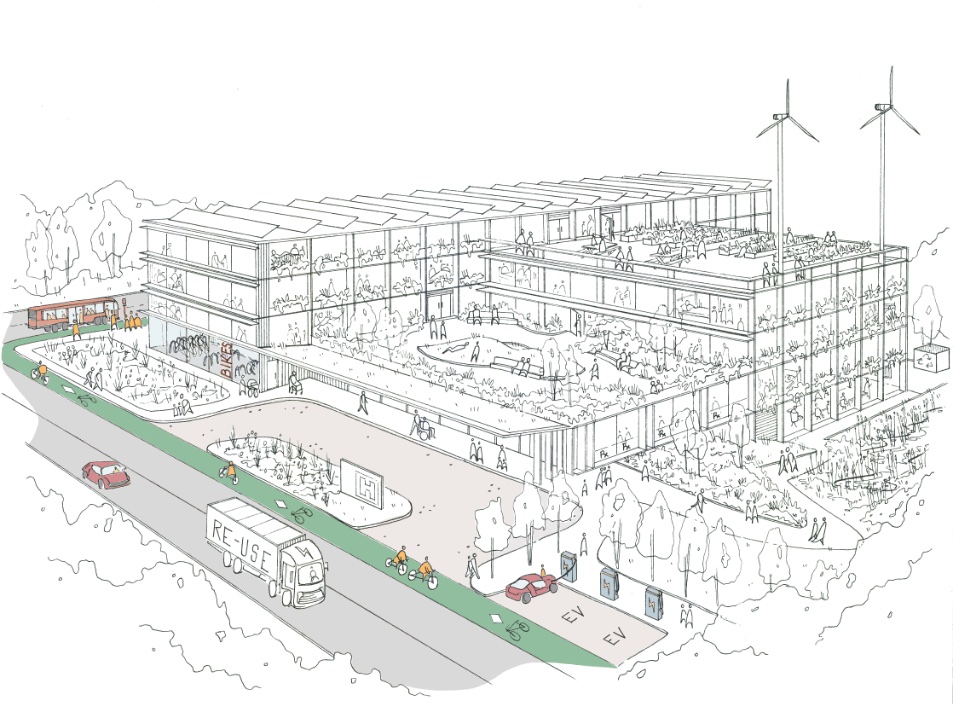 This transport section includes transportation of the health care workforce, patients, visitors, goods and services. Since transportation traditionally uses fossil fuels, it contributes significantly to climate change and air pollution.
This transport section includes transportation of the health care workforce, patients, visitors, goods and services. Since transportation traditionally uses fossil fuels, it contributes significantly to climate change and air pollution.
Health care workers can choose active transportation modes (biking, walking), use public transportation where possible or use their own zero emission vehicles. Health care fleets, including ambulances, can be zero emission vehicles. Contracts with health care suppliers can be developed which require low carbon transport modes. Transportation emission reduction can also happen by carefully considering how virtual care is used.
This section discusses bike friendly streets, zero emission vehicles, advocating for efficiency in transport use, such as carpooling or busing to work, and carefully considered virtual care.
Bike friendly streets
Hospitals that are accessible to active transportation options, such as walking and bikes, support staff and patients moving away from fossil fuel powered vehicles. We interviews some of the leaders of Friendly Streets Hamilton about changes made around a downtown hospital. Review the Transportation: Bike Friendly Streets PEACH Byte (PDF) to learn more.
Resources
- Prescribing Active Travel for Healthy People and a Healthy Planet: A Toolkit for Health Professionals (PDF)
- Doctor’s prescription for cycling (PDF)
Zero emission vehicles
Installing electric vehicle (EV) charging satiation on health care facility grounds increases community access to the charging network and encourages staff to purchase an EV for their next vehicle
Resources
Efficient transport
Busing and carpooling can save energy and reduce your personal carbon footprint.
Resources
Virtual care
Virtual care allows health care workers to reduce their commutes and energy usage within their offices/facilities. Patients also do not have to commute and can complete their appointment within the comfort of their own home. COVID-19 sparked a movement to incorporate virtual appointments into more medical specialties and proved virtual care is practical and possible.
Resources
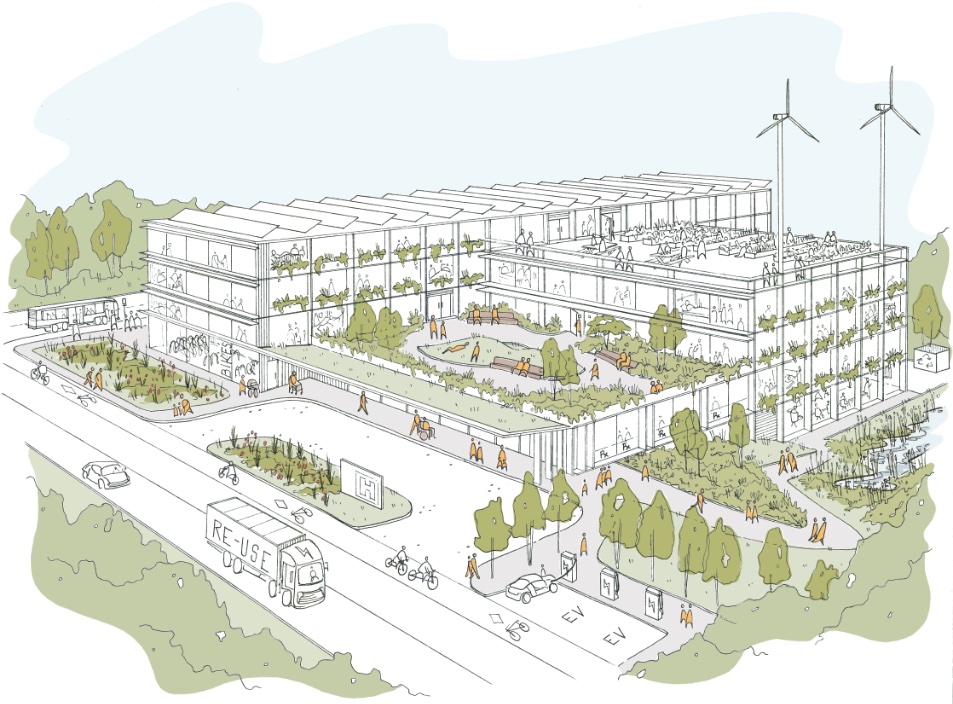 Plants absorb carbon dioxide, which helps mitigate the effects of climate change. Plants also help make communities more resilient by removing pollutants from the air, providing shade for buildings and people, moderating high temperatures (which cause urban heat islands), providing ecosystems which enable biodiversity and providing benefits for mental health.
Plants absorb carbon dioxide, which helps mitigate the effects of climate change. Plants also help make communities more resilient by removing pollutants from the air, providing shade for buildings and people, moderating high temperatures (which cause urban heat islands), providing ecosystems which enable biodiversity and providing benefits for mental health.
Natural systems can also help health care facilities adapt to climate change by moderating the impacts of floods. Examples include the use of bioswales and rain gardens.
Creating natural systems around our health care buildings contributes not only to planetary health but to personal health and wellness as well.
Trees and green space
Trees have many benefits to human health and are a great way to engage staff in sustainability and start a green team.
Resources
- Green Infrastructure Ontario Coalition
- Trees for Hamilton – Charitable organization which plants native trees and shrubs in areas of need in the Greater Hamilton Area
Bioswales and rain gardens
Are your grounds prepared for storms? Bioswales and rain gardens help to move water away from infrastructure. We interviewed Woodstock Hospital about their incredible landscaping, which can be found in our Landscaping Adaptations PEACH Byte (PDF).
Resources
- Check back for more information.
Pollinator gardens
Pollinators are native plants and flowers that allow birds and bees to thrive.
Resources
Healing gardens
Healing or meditation gardens can be created for patient and staff wellness.


